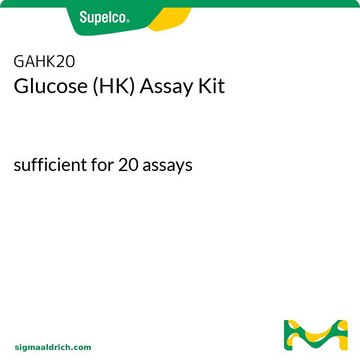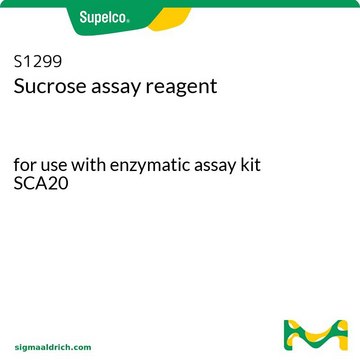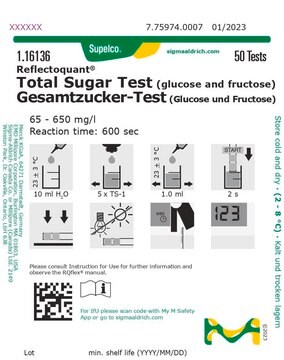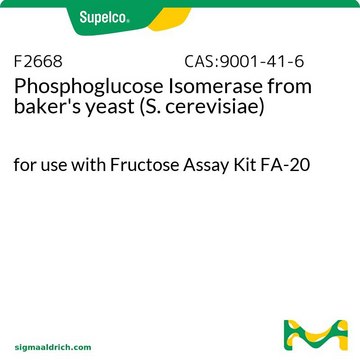FA20
Fructose Assay Kit
sufficient for 20 assays
Synonyme(s) :
Fructose Test Kit
About This Item
Produits recommandés
Utilisation
sufficient for 20 assays
Niveau de qualité
Classe(s) chimique(s) de l'analyte
sugars (fructose)
Technique(s)
photometry: suitable
Application(s)
food and beverages
general analytical
Température de stockage
2-8°C
Application
Composants de kit seuls
- fructose standard 500 mg
- glucose assay reagent 1 mL/vial
- phosphoglucose isomerase 1 mL/vial
Produit(s) apparenté(s)
Mention d'avertissement
Danger
Mentions de danger
Conseils de prudence
Classification des risques
Resp. Sens. 1
Code de la classe de stockage
10 - Combustible liquids
Classe de danger pour l'eau (WGK)
WGK 3
Certificats d'analyse (COA)
Recherchez un Certificats d'analyse (COA) en saisissant le numéro de lot du produit. Les numéros de lot figurent sur l'étiquette du produit après les mots "Lot" ou "Batch".
Déjà en possession de ce produit ?
Retrouvez la documentation relative aux produits que vous avez récemment achetés dans la Bibliothèque de documents.
Articles
Nuclear magnetic resonance (NMR) spectroscopy measures the extent to which a glycan or other molecule distorts a magnetic field.
Protocoles
Enzymatic methods for food analysis are highly specific and offer considerable time and cost savings over other methods, especially from the sample preparation standpoint. We offer a wide variety of convenient kits and reagents for rapid and reliable enzymatic food analysis.
Notre équipe de scientifiques dispose d'une expérience dans tous les secteurs de la recherche, notamment en sciences de la vie, science des matériaux, synthèse chimique, chromatographie, analyse et dans de nombreux autres domaines..
Contacter notre Service technique








